ANIMALS
From Hopping to Boxing: 25 Incredible Facts About Kangaroos
Published
9 months agoon

Shutterstock
Kangaroos are one of the most fascinating and iconic animals native to Australia. Known for their unique mode of locomotion and impressive leaping abilities, these marsupials captivate the imagination. From their efficient energy use to their social structures and reproductive marvels, kangaroos exhibit a range of remarkable traits. Their adaptability to diverse environments and significance in both Australian culture and the ecosystem underscore their importance. Dive into these 25 amazing facts to discover more about the incredible world of kangaroos.
Unique Locomotion
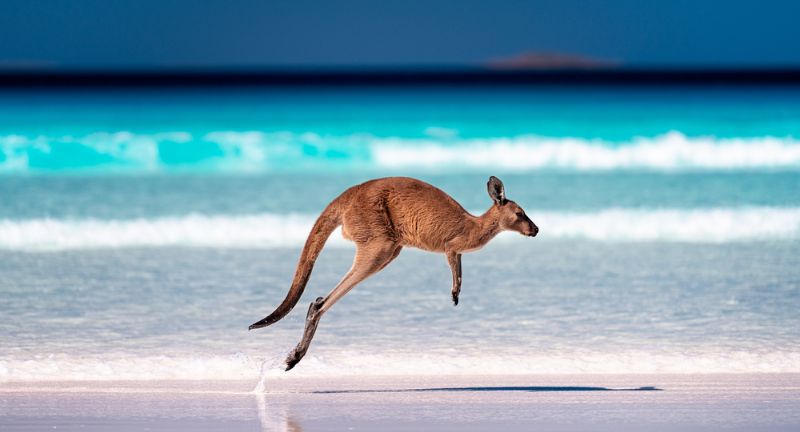
Shutterstock
Kangaroos are the only large animals that use hopping as their primary mode of movement. They can reach impressive speeds of up to 44 miles per hour. This unique form of locomotion sets them apart from other mammals. Their ability to hop efficiently allows them to cover large distances with minimal effort.
Efficient Energy Use

Shutterstock
Hopping is an energy-efficient mode of transportation for kangaroos. This allows them to conserve energy while traveling long distances. In contrast to running, hopping uses less energy and helps them escape predators quickly. This efficiency is crucial for their survival in the wild.
Large Feet

Shutterstock
Kangaroos have powerful hind legs and large feet. These adaptations make them excellent jumpers. Additionally, their feet serve as formidable weapons against predators. They can deliver powerful kicks to defend themselves.
Strong Tail

Shutterstock
A kangaroo’s tail is a versatile and powerful appendage. It acts as a third leg, providing balance while they hop. When sitting, the tail supports their body. This multifunctional tail is essential for their mobility and stability.
Marsupial Marvels

Shutterstock
Female kangaroos are marsupials, meaning they have a pouch for their young. This pouch is where the joeys develop after birth. It provides a safe and nourishing environment for the young kangaroos. This unique reproductive strategy is a defining feature of marsupials.
Birth and Development

Shutterstock
Kangaroo joeys are born very small, about the size of a jellybean. After birth, they must make their way to the mother’s pouch. Inside the pouch, they continue to develop for several months. This early birth and pouch development is a remarkable aspect of kangaroo biology.
Milk Composition

Shutterstock
Kangaroo mothers can produce two different types of milk simultaneously. Each type of milk is tailored to the nutritional needs of joeys at different stages of development. This ability ensures that each joey receives the appropriate nutrients. It’s an incredible adaptation for raising multiple young at different ages.
Social Structure
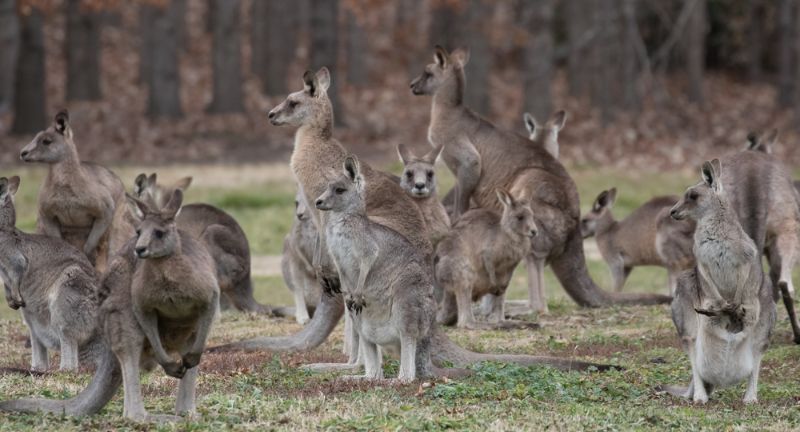
Shutterstock
Kangaroos are social animals and are often found in groups called mobs. These mobs can consist of dozens of individuals. Social structure within these groups helps protect against predators. It also facilitates mating and ensures the survival of the young.
Communication

Shutterstock
Kangaroos communicate using a variety of sounds and body language. They make clicks, clucks, and growls to convey different messages. Thumping their feet is another form of communication. This diverse range of communication methods helps maintain social cohesion.
Diet

Shutterstock
Kangaroos are herbivores, primarily grazing on grasses, leaves, and shoots. Their diet plays a vital role in maintaining the ecosystem. By controlling vegetation, they help prevent overgrowth. Their grazing habits also support other wildlife by maintaining balanced plant communities.
Water Conservation

Shutterstock
Kangaroos can survive long periods without drinking water. They extract moisture from their food and minimize water loss through urination. This ability to conserve water is crucial in arid environments. It allows them to thrive where water is scarce.
Lifespan
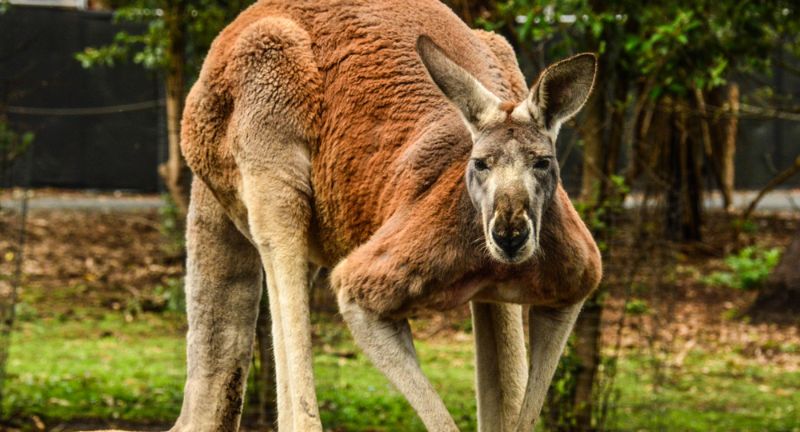
Shutterstock
In the wild, kangaroos typically live about 6 to 8 years. However, in captivity, they can live up to 20 years. Their lifespan is influenced by factors like predation and environmental conditions. Longer lifespans in captivity result from better care and fewer threats.
Four Species

Shutterstock
There are four main species of kangaroos: Red Kangaroo, Eastern Grey Kangaroo, Western Grey Kangaroo, and Antilopine Kangaroo. Each species has adapted to different environments in Australia. The Red Kangaroo is the largest, while the Antilopine Kangaroo is smaller. These species diversity showcases kangaroos’ adaptability.
Size Variation

Shutterstock
The Red Kangaroo is the largest marsupial, with males standing up to 6 feet tall. In contrast, the Antilopine Kangaroo is much smaller. This size variation among species highlights their adaptability to different environments. Larger species inhabit open plains, while smaller ones thrive in forested areas.
Leaping Abilities
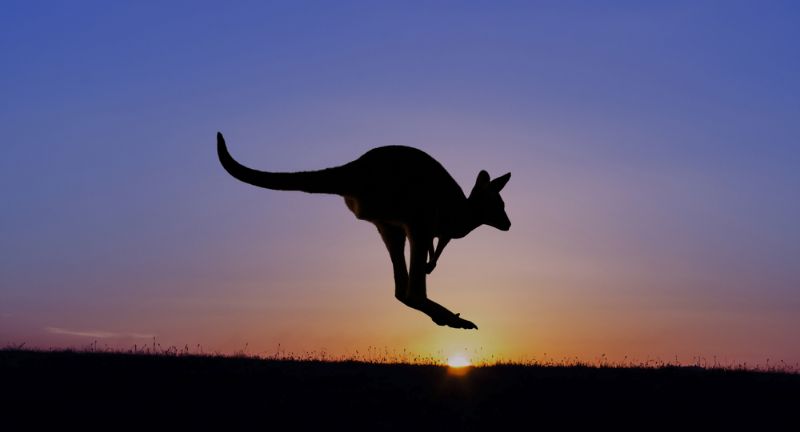
Shutterstock
Red Kangaroos can leap up to 25 feet in a single bound. They can also reach heights of 6 feet when jumping. This incredible leaping ability helps them cover ground quickly. It’s an essential skill for escaping predators and finding food.
Unique Reproduction

Shutterstock
Female kangaroos can pause their pregnancies during harsh conditions. This ensures that a new joey is only born when the environment is favorable. It’s a remarkable adaptation for survival in unpredictable climates. This reproductive strategy helps maximize the chances of offspring survival.
Double Uterus
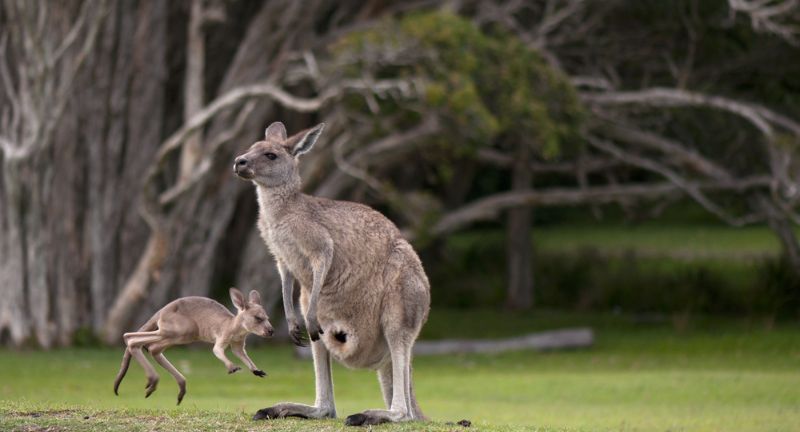
Shutterstock
Female kangaroos have a double uterus, allowing them to carry multiple joeys at different developmental stages simultaneously. This unique reproductive feature increases their reproductive success. It ensures that even if one joey doesn’t survive, another can take its place. It’s a fascinating aspect of their biology.
Coloration
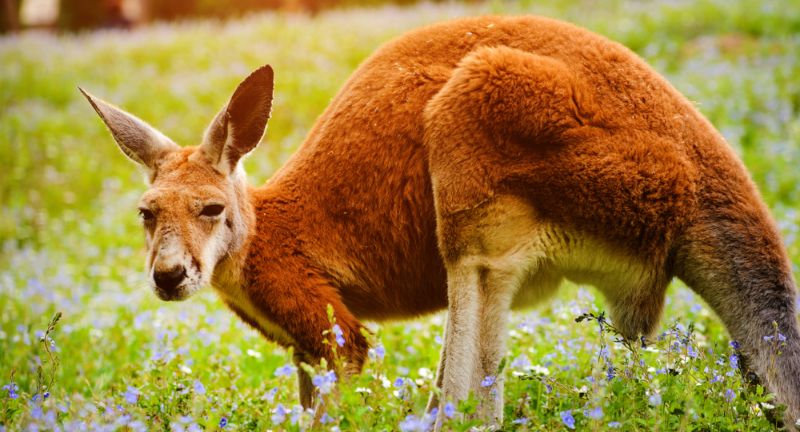
Shutterstock
The Red Kangaroo is named for its reddish-brown fur, while Grey Kangaroos have greyish-brown fur. This coloration helps them blend into their environments. Camouflage is essential for avoiding predators. It’s a key survival trait for these iconic animals.
Native Range

Shutterstock
Kangaroos are native to Australia and are adapted to a range of environments. Different species inhabit diverse regions, from forests to grasslands. This adaptability has allowed them to thrive across the continent. Their presence is a defining feature of Australian wildlife.
Predators

Shutterstock
Kangaroos’ primary predators include humans, dingoes, and occasionally large birds of prey for young joeys. These predators pose significant threats to their survival. Humans hunt them for their meat and hides. Dingoes and birds target vulnerable joeys.
Population

Shutterstock
The kangaroo population in Australia is estimated to be over 50 million. This is more than double the human population of the country. Their numbers fluctuate with environmental conditions. Management strategies are essential to maintain a balance.
Iconic Symbol
Shutterstock
Kangaroos are an iconic symbol of Australia. They are featured on the country’s coat of arms and currency. Numerous logos and brands also use the kangaroo image. Their significance in Australian culture is immense.
Cultural Significance

Shutterstock
Kangaroos have significant cultural importance to Indigenous Australians. They feature prominently in their mythology and art. Traditional stories and paintings often depict kangaroos. This cultural heritage underscores their importance in Australian society.
Boxing Behavior

Shutterstock
Male kangaroos often engage in boxing matches. They use their forearms to push and grapple with each other. Powerful hind legs deliver strong kicks during these disputes. Boxing behavior is a way to establish dominance and secure mates.
Climate Adaptation

Shutterstock
Kangaroos can adjust their activity patterns based on temperature. They become more nocturnal during hot weather. This behavior helps them avoid the midday heat. It’s an adaptation that enhances their survival in extreme climates.
Conclusion

Shutterstock
Kangaroos are truly remarkable creatures, embodying a blend of unique adaptations and fascinating behaviors. Their ability to thrive in various environments and their important role in Australian culture and ecosystems highlight their significance. Understanding these amazing facts about kangaroos not only deepens our appreciation for them but also underscores the importance of conserving their habitats. As we marvel at their incredible abilities and social structures, it’s clear that kangaroos are a vital part of the natural world. Let’s continue to learn about and protect these extraordinary animals for future generations.
More Amazing Animals+
-


33 Things Dogs Can Do That Cats Can’t
-


An Alligator Causing Havoc In Florida Woman’s Yard is Finally…
-


25 Reasons Why Huskies Make The Best Pets
-


Vitakraft’s Squeezable, Hand-Fed Snacks Named Best Cat Treat of 2022
-


20 Fun Facts About Giraffes
-


Baby otter hugs and snuggles mom
-


Bear sightings from the Anakeesta Chairlift! #WildBears #MomandCubs
-


Owner of World’s Oldest Dog Reveals Secrets of Pets Long…
-


Bison bull caught scratching away the last bit of his…
-


A Woman Recieves a Surprise Gift in the Air After…
-


These super-awesome #fire #goats are stoked to get new plants…
-


31 Reasons Porcupines Are Even Cuter Then They Look
